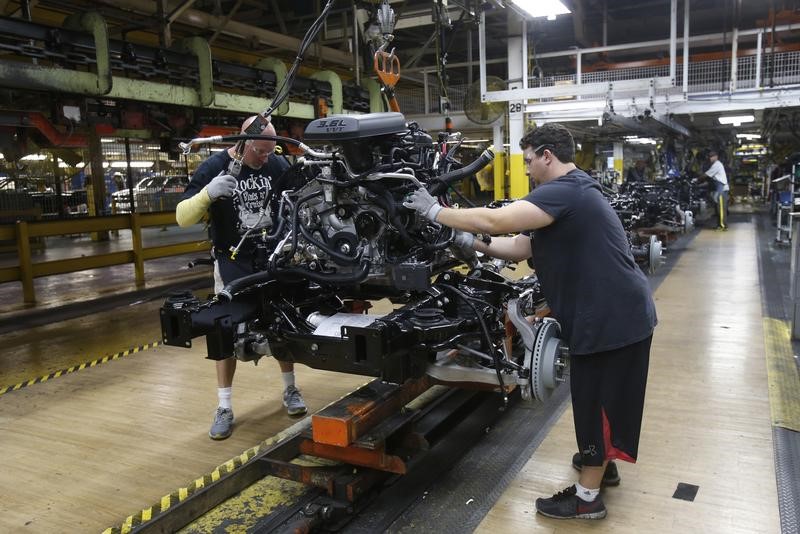By Lucia Mutikani
WASHINGTON (Reuters) - U.S. factory output increased for a sixth straight month in February while consumer sentiment rebounded in early March, underscoring the economy's resilience even as growth appears to have slowed significantly in the first quarter.
That was supported by other data on Friday showing a gauge of future economic activity rose in February to its highest level in more than a decade. The improving outlook backs the Federal Reserve's decision this week to raise interest rates.
"First-quarter growth is likely to disappoint, but that is not the full economic story," said Joel Naroff, chief economist at Naroff Economic Advisors in Holland, Pennsylvania. "There are other segments that are starting to pick up the slack."
The Fed said manufacturing production increased 0.5 percent last month after a similar gain in January. That was the biggest back-to-back increase in three years. Rising commodity prices are boosting demand for machinery and other equipment.
Manufacturing, which accounts for about 12 percent of the U.S. economy, is regaining ground as the prolonged drag from lower oil prices, a strong dollar and an inventory overhang fades. It is also benefiting from a surge in business confidence amid promises by the Trump administration to pursue business-friendly policies, including tax cuts and deregulation.
"Manufacturing is set to do well for a change, after several years of lagging far behind," said Michael Montgomery, a U.S. economist at IHS Markit in Lexington, Massachusetts. "The sector is racking up solid growth, that is a very welcome change at beleaguered factories."
The dollar fell to a five-week low against a basket currencies, remaining under pressure for a third straight session, after the Fed raised interest rates on Wednesday for the third time since the 2008 financial crisis, but stuck to its gradual pace of monetary policy tightening.
Stocks on Wall Street were little changed, while prices for U.S. government debt were trading higher.
SENTIMENT RISES
President Donald Trump's pledges to boost economic growth and employment have also been embraced by Americans, leading to a jump in consumer sentiment. In a separate report on Friday, the University of Michigan said its consumer sentiment index rose 1.3 percentage points to a reading of 97.6 in early March.
The survey's measure of current conditions was the highest since 2000 as households grew optimistic about their finances. That reflects two straight months of job gains above 200,000.
While Trump's election has buoyed confidence among households and businesses, that has not translated into a surge in either business or consumer spending as details of the administration's economic policy remain vague.
"Despite the favorable news on sentiment, real consumer spending has been looking pretty soft in recent months," said Daniel Silver, an economist at JPMorgan (NYSE:JPM) in New York.
In a third report on Friday, the Conference Board said its leading economic index increased 0.6 percent in February to its highest level in over a decade. The Atlanta Fed is forecasting GDP rising at a 0.9 percent annualized rate in the first quarter, braking after the fourth quarter's 1.9 percent pace.
February's solid increase in manufacturing output was insufficient to lift industrial production, which was unchanged because of a 5.7 percent weather-driven plunge in utilities generation. Industrial production fell 0.1 percent in January.
Mining output increased 2.7 percent last month, lifted by a 7.1 percent surge in oil and gas well drilling.
Last month, manufacturing output was boosted by a 0.8 percent rebound in the production of motor vehicle and parts. Machinery output increased 1.1 percent.
There were also increases in the production of primary metals, fabricated metal products and nonmetallic mineral products. Computers and electronic products output rose 0.7 percent last month.
With manufacturing output accelerating, capacity utilization -- a measure of how fully factories are deploying their resources -- rose 0.3 percentage point to 75.6 percent last month, the highest since October 2015. Still, it remains 2.8 percentage points below its long-run average.

"Business surveys have shown an encouraging pickup in investment plans since the election, but for now low capacity utilization rates are providing limited urgency to ramp up capex immediately," said Ted Wieseman, an economist at Morgan Stanley (NYSE:MS) in New York.